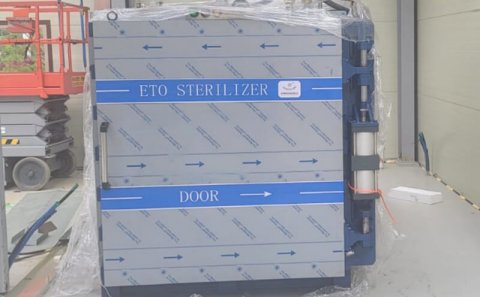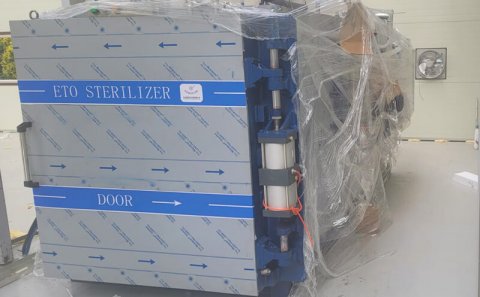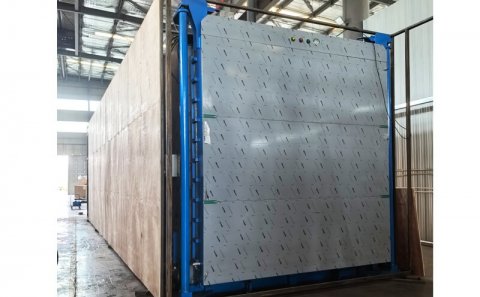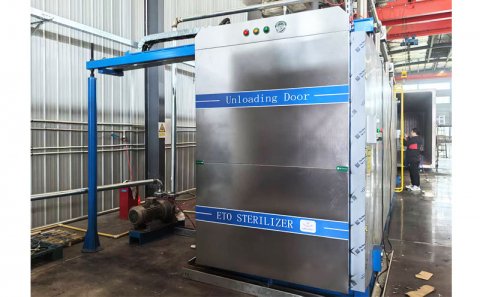Sterilization equipment shall comply with the applicable safety standards.
Validation,IQ,OQ,PQ,
The purpose of validation is to demonstrate that the sterilization process established in the process definition (see Clause 8) can be delivered effectively and reproducibly to the product within the sterilization load. Validation consists of a number of identified stages: installation qualification (IQ), operational qualification (OQ) and performance qualification (PQ). Testing shall not commence until the procedures and/or protocols have been approved.
In a health care facility, IQ and OQ are typically performed by the sterilizer manufacturer, although they can be performed by any qualified personnel. MPQ data might be available from the sterilizer manufacturer for general loads.
For health care facilities, this means describing and documenting the following:
-
a)the validation steps that need to be performed;
-
b)the way in which these validation steps will be performed, along with a listing of responsible individuals, departments and/or outside contractors;
-
c)the criteria for successful validation.
For health care facilities, there is an option of contracting with an outside service to perform this validation; however, the health care facility is still responsible for ensuring that the validation complies with the requirements of this International Standard.
IQ
IQ is undertaken to demonstrate that the sterilization equipment and any ancillary items have been supplied and installed in accordance with their specification.
Installation of the equipment and all associated services shall be in accordance with the architectural and engineering drawings. The installation shall comply with all pertinent national, regional and local regulations.
The location in which the equipment is to be installed should comply with all pertinent national, regional and local regulations.
The calibration status of any test instruments used during IQ shall be confirmed prior to IQ implementation.
During IQ, drawings of installation equipment, water heating and its auxiliary equipment shall be completed.
During IQ, the impact of system changes on design and process specifications shall be evaluated and recorded in the design history document.
IQ is usually the responsibility of the sterilizer manufacturer, but in industrial organizations, it is usually carried out by the field staff in cooperation with the factory representative. If IQ is carried out by the manufacturer or a third party, the organization is responsible for the preservation and management of documents and records related to procurement and equipment installation.
OQ
OQ is undertaken to demonstrate the ability of the equipment to meet the performance requirements of its design specification.
All instruments (including any test instruments) used for monitoring, controlling, indicating or recording the sterilization process shall be calibrated prior to OQ.
The following information shall be recorded for all instruments used for monitoring, control, indication or recording.
-
a)equipment identification;
-
b)calibration schedule;
-
c)actual completion date for each calibration, as well as who performed it;
-
d)the next scheduled calibration date.
OQ shall demonstrate that the installed equipment is capable of meeting its operating specification.
During OQ, system software (e.g. computer measurement and control system) shall be tested under all fault conditions. It is the user's responsibility to determine that the software has been confirmed.
OQ can include the following when using a predefined cycle:
Average deviation of temperature
In empty chamber OQ exercises, the recorded temperature range, within the usable chamber volume during EO or inert gas exposure, of ± 3 °C of the average recorded chamber temperature at each time point should be obtained after an equilibration period. When the OQ exercise is carried out using a loaded chamber, then the ± 3 °C tolerance might not be achievable.
PQ
PQ is the stage of validation that uses product to demonstrate that the equipment consistently operates in accordance with predetermined acceptance criteria and the process yields product that is sterile and meets the specified requirements.
IQ and OQ may be a one-time exercise for the specific equipment being employed for a sterilization process. PQ should be carried out for each new process and/or product to be validated to demonstrate that the process complies with identified acceptance criteria and is capable of delivering the required SAL to the product.
PQ consists of both microbiological and physical performance qualification and is performed in the equipment used to sterilize the product.
9.4.1.2 PQ shall be performed on the introduction of new or modified products, packaging, load configuration, equipment or process parameters, unless equivalence to a previously validated product, packaging, load configuration, equipment or process has been documented.
operation specification of sterilization equipment
The operation specification of sterilization equipment shall include, but not limited to:
-
a)step-by-step operating instructions,
-
b)fault conditions, the manner in which they are indicated, and actions to be taken,
-
c)instructions for maintenance and calibration, and
-
d)details of contacts for technical support.
IQ, OQ, PQ and subsequent requalification(s) shall be reviewed annually to determine the extent of requalification that is necessary. This shall include an assessment of the need to reconfirm the product SAL through microbiological studies. The outcome of this review, including the rationale for decisions reached, shall be documented.
Jun 17, 2025
view: 1705
Requirement of small and medium-sized ethylene oxide sterilizers The requirements for medium-sized and small-sized ethylene oxide sterilizers are: good pressure resistance and airtight performance, capable of withstanding 1.25 times of work...
Read More
Jun 17, 2025
view: 1764
What is parametric release of sterilization? Parametric release is a method of releasing product from sterilization as sterile without the use of BIs, relying instead on a demonstration of conformity of the physical processing parameters to all speci...
Read More









